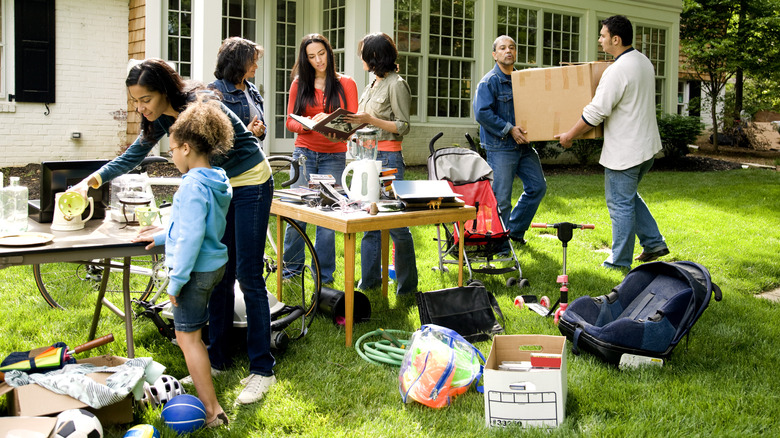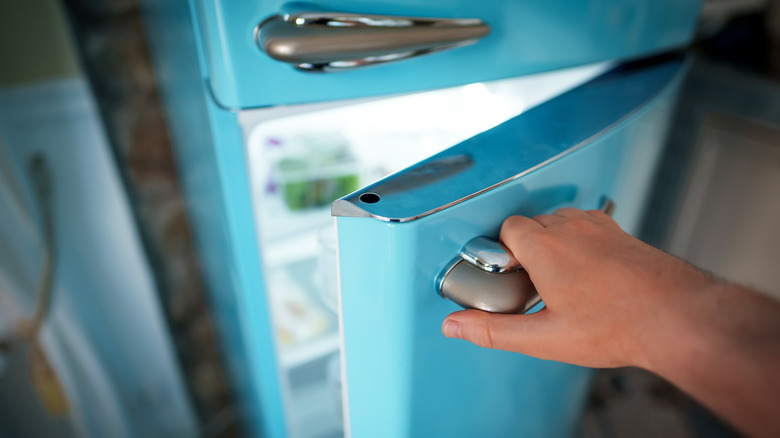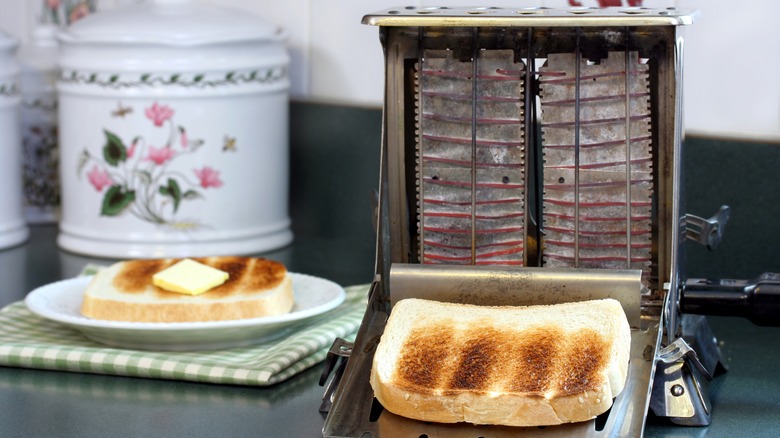Think Twice Before Buying This Common Item At An Estate Sale
Going to estate sales can be a lot of fun for those who enjoy looking around for hidden finds. Some of the most valuable things to look for at estate sales range from fine china and vintage jewelry to antique furniture and rare artwork. For some, there is also the desire to pick up cool vintage appliances. However, before you grab an old electrical appliance, take a moment to consider what it might bring with it. You may get stuck with not only a faulty appliance but one that could be dangerous and cause a fire or even electrocution.
In recent years, newer versions of electrical appliances have been made with safety in mind, and today's safety standards may not have applied when the vintage piece was made. Not only can old appliances contain lead paint, but the seemingly-simple plugs from decades ago might not work or be safe, either. A stray touch could give off a tingle of electricity or worse, so a ground-fault circuit interrupter outlet may be required. Refrigerators from the 1920s did not yet use Freon but ran on gases instead, which could lead to poisoning or explosion. In addition, electronics from the past could have worn-out wiring and insulation, so there is a risk of sparking a fire. Also, even if the appliance seems functional, years of use can take its toll on internal components, leading to unpredictable and potentially-hazardous behavior.
Old appliances may have performance issues, too
While safety should always be the number one priority, other issues may arise from buying vintage appliances. Whether you want to pick up larger pieces like refrigerators or even smaller ones such as coffee makers and toasters, hiccups can make using these pieces regularly less than thrilling. While the vintage aesthetics might be on point, some functionalities can be slow and costly. For instance, a cool-looking retro fridge might struggle to keep your groceries properly chilled. According to Energy.com, before the Energy Star seal came into effect in 1992, refrigerators typically used about 35% more energy than they do now. This is why one of the ways to reduce your energy costs at home is to get new appliances — and not use those vintage ones.
Though you might also get stuck on the cheap price tag and think you're getting a great deal, vintage appliances are prone to break down as well. Finding replacement parts can be challenging and often requires specialized knowledge and hours of searching on the internet. Then, when (or if) you do find the parts you need, you may find that they are expensive, since they're likely not being manufactured anymore. You may also have to factor in the potential cost of repairs by a qualified repair expert. All of this can negate the cheap deal you got in the first place.
When you just must have that vintage find
Yet, if your heart is set on a specific piece, do your research. Learn about the model's common issues and repair costs. Before buying, make sure to test it to assess its safety and functionality. It's also best to ensure it has all its parts to avoid having to search down replacement pieces altogether. Sometimes a little restoration can breathe new life into an old appliance, but be prepared for the potential challenges and costs.
Ultimately, the decision of whether to buy vintage electronics is a personal one. Just remember, the allure of the past shouldn't blind you to the potential safety hazards and performance pitfalls. Approach your estate sale findings with some skepticism and a clear understanding of what may be involved. Additionally, consider getting a safety inspection for any vintage items you have in your home to check wiring and gas fittings, and be prepared to replace old plugs. In the end, a vintage aesthetic can go a long way, as long as it doesn't come at the cost of your safety or finances.


